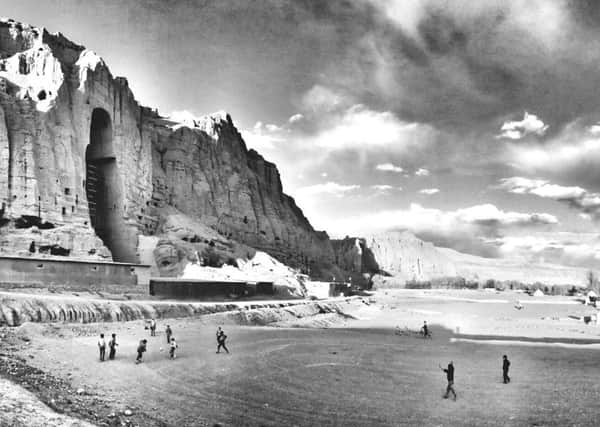William Dalrymple's '˜clean and powerful' photos reveal an interior world


At a dinner in Goa, in the winter of 2014, William Dalrymple pulled out his phone and showed me some photographs from his travels. This was a noisy party, guests were chatting animatedly, wine glasses were being refilled. But even in the elegant disquiet of the evening, the photographs held their own. They exuded a solid quietness; I recognised something clean and powerful, a kiln fire. Like thread sliding through a needle’s eye, my attention passed into the photographs. Later, I felt that encountering the photographs at the dinner party was akin to seeing a sage in a bazaar: life was the same noisy, mostly pointless thing for everyone, but accidental sacredness was everywhere, too. I wrote to William, requesting if I might see other pictures. I told him that I was very interested that the photographs had been made on a phone; I increasingly believe some part of serious photographic future will be made on the phone; the medium offers lightening immediacy and, when used sensitively, encourages an intimacy that sometimes comes in the way of the camera as an object. Already, change is at hand. Sooni Taraporevala, for instance, shot a handsome photo essay entirely on her iPhone; Ai Weiwei has a flourishing Instagram account.
A year passed; we resumed the conversation; there were more pictures to look at.
Advertisement
Hide AdAdvertisement
Hide AdIt might be easy to think of the pictures as being about place – mountains with peculiar grooves hinting to abandoned civilization; deserted beaches where light strains through sea mist; an artist’s studio, with half completed models; great boulders seething against the horizon. But perhaps that’s me being lazy. The more time I spent with the photographs, the more I felt what had drawn me to them was the same quality that attracted me to the novels of Virginia Woolf: their interiority. It might be simple enough to say Woolf’s novels are about the “stream of consciousness” or certain important themes like gender and sexuality – of course they are. But more acutely, the books are about where the act of serious reading can bring you, beyond intellectual shimmer and bounce, to pause and revelation. Great books carry seeds of solitude, they take in your quiet and give you their own.
Sometimes photographs also have this quality, they no longer serve as visual proof of what exists but become intimations of what is unknown, and only deeply felt. Dalrymple’s photographs took me back to the same dangerous place good writing dares me to enter, a chamber of questioning.
Have other writers attempted photography? Certainly, and most recently, Teju Cole, whose essays on the subject have been influential. What might a writer bring to the medium? Dalrymple comes to the ground with economy, composition and muscular elegance for a craft that he first practiced as a student and returns to being a disciple of language. What the pictures withhold is equally telling of them, as they are of how restraint is a good writer’s forte. In one of the most striking photographs here, you wonder why the dog lopes across the shore: is he out on a friendly run, perhaps playing fetch? Or is he running from something the photographer leaves for us to decode?
Dalrymple’s photographs carry the technical precision of a writer constantly economising, burning down his sentence to its essence. While the photographs are panoramic, sweeping, full of range, the net cast wide catches the singular telling detail that evidences how the image is beholden to language and its measure. You see it in the images of the boulder, which might be easily lost, but all of a sudden you see a spool, which then repeats in the sky, in the cloud, in the shadow it casts; inadvertently, they become formalist statements, tracking pattern and repetition that may or may not be coincidental. Unlike the non-fiction accounts in his books, these photographs don’t offer explanation: they don’t need to, being whole unto themselves, as more than literal representation, as tiny, perfect mirrors of longing and contemplation. But while the books are distinguished by their historical sweep and exactitude, the photographs have the quality of a lake, a great bowl containing life and death, a flickering of the ineffable. This makes photography a fresh, even exciting, language for his exploration.
The pictures are also about an early place in an artist’s life, perhaps the same room where the writing lived before it was made into book. Such places are temples where you don’t know the name of the God, but you know you are in the presence of something divine. Once things are named and known, admired and adored, something essential leaves them; they become communal things. These photographs may soon become public documents, but right now they are humming with mystery and doubt, the swan right before its flight.
• The Writer’s Eye by William Dalrymple with an introduction by Siddharth Dhanvant Shanghvi is published by William Collins. His photographs will be at Grosvenor Gallery, London, 24 June until 22 July.